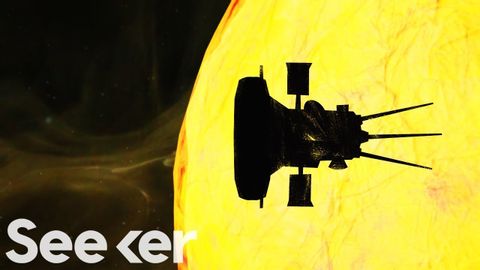美國宇航局要去太陽,為什麼這麼瘋狂? (NASA Is Going to The Sun, Here's Why That's So Crazy)
Jerry Liu 發佈於 2021 年 01 月 14 日  沒有此條件下的單字
沒有此條件下的單字US /ˈkruʃəl/
・
UK /'kru:ʃl/
US /ɪnˈkrɛdəblɪ/
・
UK /ɪnˈkredəbli/
- adv.令人難以置信的是;難以置信地;非常地;令人難以置信地
US /pəˈtɛnʃəlɪ/
・
UK /pə'tenʃəlɪ/
US /ɪkˈstrim/
・
UK /ɪk'stri:m/
- adj.極端的;盡頭的;極端的;極端的
- n.最大程度的努力;極限;極端手段

